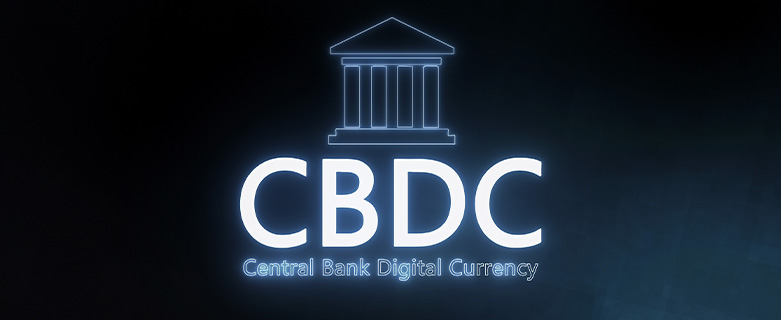
Central Bank Digital Currency and Chargebacks
By Chris Alarie on May 31, 2023
The payments industry is often affected by the winds of technological change. Usually this means adapting to new, digital forms of conducting monetary transactions. But sometimes the new technology, like cryptocurrency, is effectively a new form of money itself. The latest possible change of this sort is Central Bank Digital Currency (CBDC). While it is largely a theoretical concept in Western countries, there are some examples of actually existing CBDCs in developing parts of the world. In whatever form it may take, CBDCs seem likely to eventually be adopted in some form or another and are thus worth examining.
What is Central Bank Digital Currency?
A CBDC is a wholly digital form of money similar to cryptocurrency. Unlike cryptocurrency, it is not decentralized money but is rather issued by and backed by a central bank. The Federal Reserve defines it as a “digital liability of a central bank that is widely available to the general public.”
Unlike cryptocurrencies, which are issued and controlled by private (and sometimes anonymous) entities, CBDCs are issued by central banks, giving them a stability that cryptocurrency lacks. Even so-called stablecoins that are supposed to be pegged to the value of the dollar have shown a tendency to crash. CBDCs remove many of the risks behind these crashes by being directly issued by central banks and backed by the full faith and credit of the governments that issue them.
There are two kinds of CBDCs: wholesale and retail. Wholesale CBDCs are for use by financial institutions and serve a function similar to reserves held in a central bank. Retail CBDCs are for use by the public and businesses. Retail CBDCs as functional replacements for or complements to cash is generally the focus of most CBDC theorizing.
CBDCs are largely a theoretical form of currency as there are only a handful currently in wide use: the eNaira in Nigeria, the Sand Dollar in the Bahamas, the JAM-DEX in Jamaica, and the Eastern Caribbean Bank’s DCash that is used in several Caribbean countries. But more than 90 countries’ central banks have expressed some interest in possibly issuing a CBDC. The United States Federal Reserve is currently studying it and the People’s Bank of China (PBOC) experimented with a pilot CBDC program during the 2022 Beijing Olympics. Brazil also recently began a CBDC pilot program.
What Are the Potential Advantages of CBDCs?
The optimistic outlook for CBDCs is that they provide many of the benefits of cryptocurrency with none of the risks. As a digital currency, CBDCs could provide a convenient form of currency that is native to the digital worlds where most modern commerce takes place. It could support faster, cheaper, more efficient payment processes. It could provide consumer access to the financial system for people without access to traditional banks. It could facilitate easier transactions across borders. And as a central bank issued asset, it would likely have greater security and tracking capabilities than cryptocurrency, which faces significant theft problems stemming from its anonymity.
What Are the Potential Disadvantages of CBDCs?
The risks and disadvantages of CBDCs are hard to parse due to uncertainty about the details of how they would be enacted.
CBDCs’ claims to greater security and lowered susceptibility to theft depends on them not replicating the anonymity of cryptocurrency. But there is no guarantee that central banks will implement CBDCs in such a way. For example, the European Central Bank is considering a CBDC model in which licensed financial institutions are given permission to use certain nodes of a blockchain network to distribute digital euros. These digital euros would be anonymous, fungible tokens similar to cryptocurrencies, with all the risks therein.
Indeed, the anonymity of crypto-style CBDCs is a counter to concerns about consumer privacy in less anonymous CBDC models. Earlier this year, the Federal Reserve Bank of San Francisco advertised that it was hiring software developers to research and design a CBDC. In response, Republican Congressman Tom Emmer introduced legislation that would ban the Federal Reserve from doing so. As part of a panel at the libertarian think tank, the Cato Institute, Emmert decried CBDCs:
“As the federal government seeks to maintain and expand the financial control to which it has grown accustomed to, the idea of the central bank digital currency has gained traction within the institutions of power. I'm confident that American values will always prevail against the power-hungry whims of unelected bureaucrats.”
Other concerns include the cost of implementation across large financial systems, the possibility of significant fraud liabilities, the possibility that criminals could use CBDCs for money laundering, and questions about how it could affect the ability of central banks to influence monetary policy. The Federal Reserve seems concerned that a CBDC could weaken its control over monetary policy while the Bank for International Settlements sees CBDCs as a way to strengthen the influence of central banks.
There are also risks that the public won’t willingly adopt CBDCs as a form of currency. In Nigeria, the public has largely eschewed the eNaira even during a significant cash shortage. Citizens have protested in the streets, demanding that paper money be restored rather than using the new CBDC.
Will CBDCs Have Chargebacks?
As with everything else relating to CBDCs, it is hard to answer this question with any certainty. But if the United States Federal Reserve ever creates a CBDC, it seems very likely that it would operate similarly to the dollar and have a similar set of uses and instruments, including chargebacks.
On its website, the Federal Reserve explains that its “key focus [in researching CBDCs] is on whether and how a CBDC could improve on an already safe and efficient U.S. domestic payments system.” For merchants, this means that any eventual Federal Reserve CBDC would likely be subject to the same sorts of rules and regulations as existing currency, including something like the chargeback mechanism. It may not be called a chargeback and it may operate on different technical and regulatory systems, but it seems overwhelmingly likely that consumers will have some means of contesting a CBDC transaction and receiving their money back.
Conclusion
Despite the numerous associated uncertainties, it seems inevitable that CBDCs will eventually be adopted at a larger scale, in one form or another. For merchants, this means following those developments and learning how to implement any necessary changes on their end, both in terms of the basic processing of transactions as well as related elements of payments processing like chargebacks, refunds, and anti-fraud measures.


